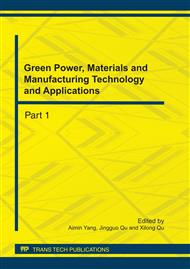p.244
p.249
p.254
p.259
p.264
p.269
p.274
p.279
p.284
Environmental Activity of Heavy Metals in Slags Treated by Electrokinetic Removal Technology
Abstract:
Ancient pyrometallurgical zinc generated large amounts of slag. Natural leaching from ancient pyrometallurgical zinc sites had contaminated the soil closed to the deposits. Enhanced electrokinetic removal technology was adopted to treat these slags. In this paper, atomic fluorescence spectrometer and scanning electronic microscope were used to investigate the total metal concentration and the surface topography of slags. The results showed that the heavy metals content in slags was high. The content of zinc in slags was up to 114550mg/kg. The surface topography of slags indicated that that the slags were corroded obviously by rainwater and lots of poisoning elements had released to the surroundings. The optimized BCR sequential extraction procedure was used to analyze the chemical speciation of heavy metals in slags. It could be determined that the evironmental activity of ancient pyrometallurgical slag decreased obviously after the treatment with electrokinetic removal technology and part of the residual fraction of heavy metals in slags transformed to the other fractions during the electrokinetic removal process.
Info:
Periodical:
Pages:
264-268
Citation:
Online since:
August 2011
Authors:
Price:
Сopyright:
© 2011 Trans Tech Publications Ltd. All Rights Reserved
Share:
Citation:


